Part One: Cutting through the Noise of AI
The promise of AI is undeniable but in order to capitalize on the competitive advantages this constantly evolving technology can bring to your business, it is important to be able to sift through the noise.
Have you ever participated in a conversation where it seems like everyone is pretending to know what they’re talking about?
That's sort of what AI feels like these days. We all know it's "coming for our jobs", "going to revolutionize every industry," "reduce costs," "drive productivity,", "increase accuracy", etc…If someone asks you for your take, you've probably got one. But if you had to explain it to a five year old, how many of us could?
The promise of AI is undeniable but in order to capitalize on the competitive advantages this constantly evolving technology can bring to your business, it is important to be able to sift through the noise.
This three part series will aim to accomplish the following:
- Part One: Introduce AI fundamentals that will lead to more productive business discussions
- Part Two: Discuss where AI is being introduce to corporate security today
- Part Three: Explore the opportunity that AI can bring to the future of your corporate security program
Part One: Of course I know what AI is, but why don't you tell me so I know you know.
ChatGPT defines Artificial intelligence (AI) as a field of computer science that focuses on creating intelligent systems that can learn, reason, and make decisions like humans. It involves developing algorithms and models that enable computers to process and understand complex data, recognize patterns, and perform tasks with minimal human intervention. Ultimately, AI aims to replicate and augment human intelligence to enhance efficiency, solve complex problems, and improve our lives in numerous domains (Our lives. Sure, ChatGPT).
To understand artificial intelligence (AI) and it’s place in your program, there are a must-knows:
AI fundamentals
Data: AI relies on data, which computers use to learn and make decisions.
Algorithms: Algorithms are like sets of instructions that tell computers what to do with the data. They help computers analyze the data, find patterns, and make predictions or decisions based on that information.
Machine Learning: Machine learning is a type of AI that focuses on teaching computers how to learn from data on their own. It's like training a computer to recognize patterns, just like you learn to recognize shapes, colors, or animals. Machine learning can be supervised (trained using labeled data sets to produce a specific outcome) or unsupervised (trained using unlabeled data sets which is helpful when you don’t know the outcome and are trying to finding hidden patterns or correlations in vast amounts of data)
Neural Networks: Neural networks are structures in AI that are inspired by how our brains work. They help computers process and understand complex information. It's like a big network of interconnected nodes that work together to solve problems.
Deep Learning: Deep learning is a more advanced form of machine learning that uses neural networks to solve complex problems. It's like having multiple layers of interconnected nodes that allow computers to learn and understand information in a more sophisticated way.
Training and Testing: AI systems requiring training to make outputs more accurate. Training means feeding the computer lots of data and letting it learn from that data.
Deepen your understanding of AI
Natural Language Processing (NLP): NLP enables computers to understand and process human language, both written and spoken. It involves tasks like language translation, sentiment analysis (understanding emotions), and chatbots that can have conversations with humans.
Computer Vision: Computer vision focuses on teaching computers to see and understand visual information, just like humans do. It involves tasks like image recognition, object detection, and facial recognition. Computer vision is used in various applications, from self-driving cars to facial recognition systems.
Reinforcement Learning: Reinforcement learning is a type of machine learning where computers learn through trial and error. They receive rewards or punishments based on their actions in an environment and use that feedback to improve their decision-making over time. It's like teaching a computer to play a game and get better at it by learning from its mistakes.
Generative AI: Generative AI refers to a branch of artificial intelligence that focuses on creating new content, such as images, music, or text. It employs techniques like generative adversarial networks (GANs) to generate realistic and original data. GANs consist of a generator network that produces new data and a discriminator network that evaluates its authenticity. By training these networks together, generative AI enables the creation of novel and diverse content, offering new avenues for creativity and innovation.
Explainable AI: Explainable AI focuses on making AI systems more transparent and understandable. It aims to provide insights and explanations about how AI arrives at its decisions, which is crucial for building trust and understanding potential biases or errors.
These concepts give you a glimpse into the broader field of AI and its applications. AI is a rapidly evolving field, and there are always new developments and techniques being explored. Exploring these concepts can help you gain a deeper appreciation for the possibilities and challenges of artificial intelligence.
Applying these fundamentals to tech evaluations
The words artificial intelligenceI are used liberally in tech marketing these days. It can be hard to understand where AI comes into play in the solution and how much value is really added.
A few questions to ask yourself as you consider whether AI should play a role in solving a particular problem:
- Does this decision-making process just need to be automated or do I need it to get smarter over time?
- How important is accuracy in this decision making process? What is an acceptable margin for error?
- How important is transparency in the process to understand how an outcome was achieved?
You can then flip these into questions for your vendor partners:
- How and where does this product apply Artificial intelligence?
- What are the inputs and how is accuracy determined?
- Will this tool get smarter with my usage?
- How do I know when there is a false positive or error? How can I report a false positive or error to the system?
- What are the future plans for continued integration of AI into this technology?
Hopefully this provides an approachable understanding to some of the AI fundamentals.
Follow Base Operations on Linkedin for our next installment. which will focus more on where these technologies are being deployed in our day-to-day lives and more specifically, within corporate security.
Sign up for our webinar on June 15th for a discussion on the current and future state of AI in corporate security.
Takeaways

Join 1100+ security leaders getting new ideas on how to better protect their people and assets.









